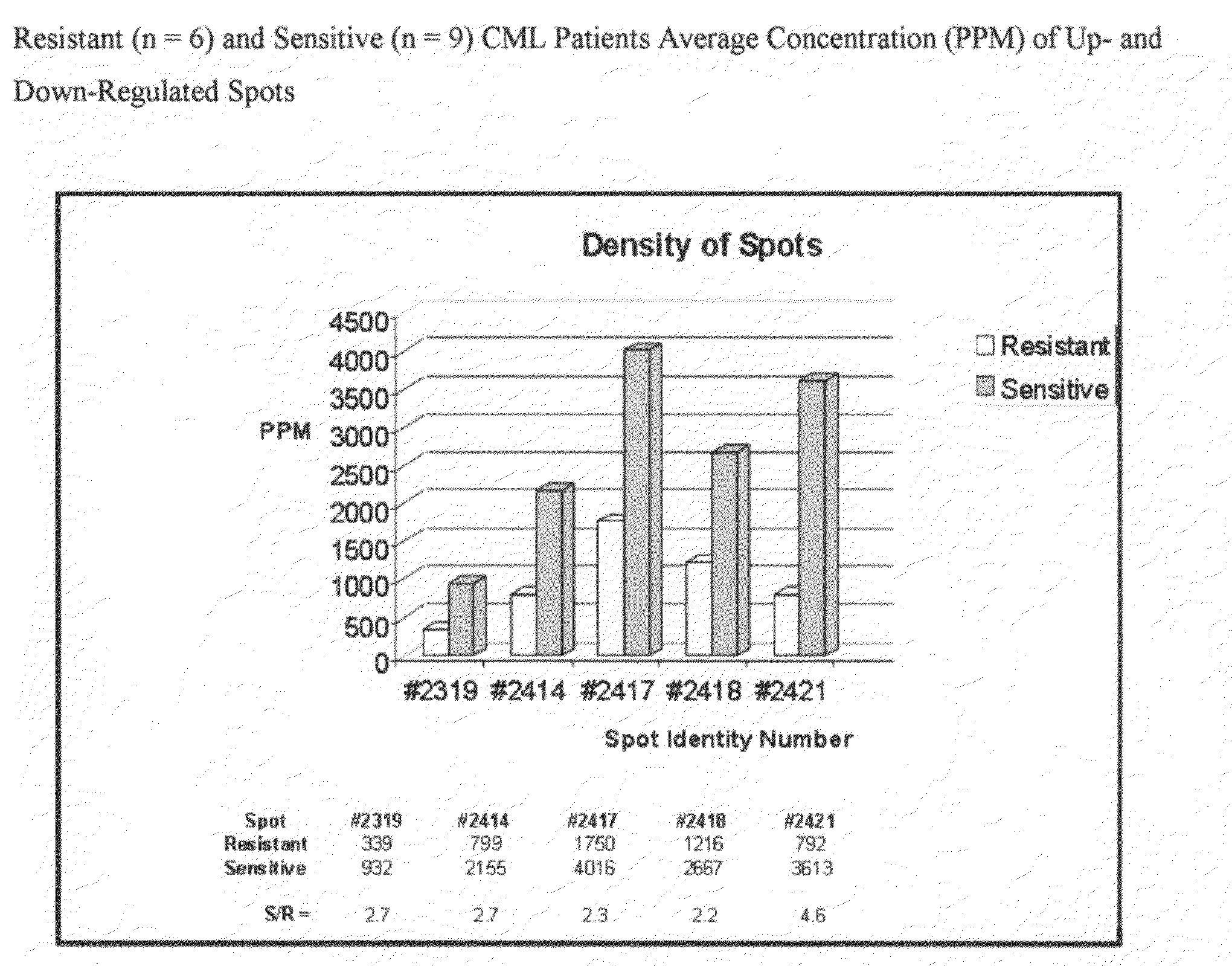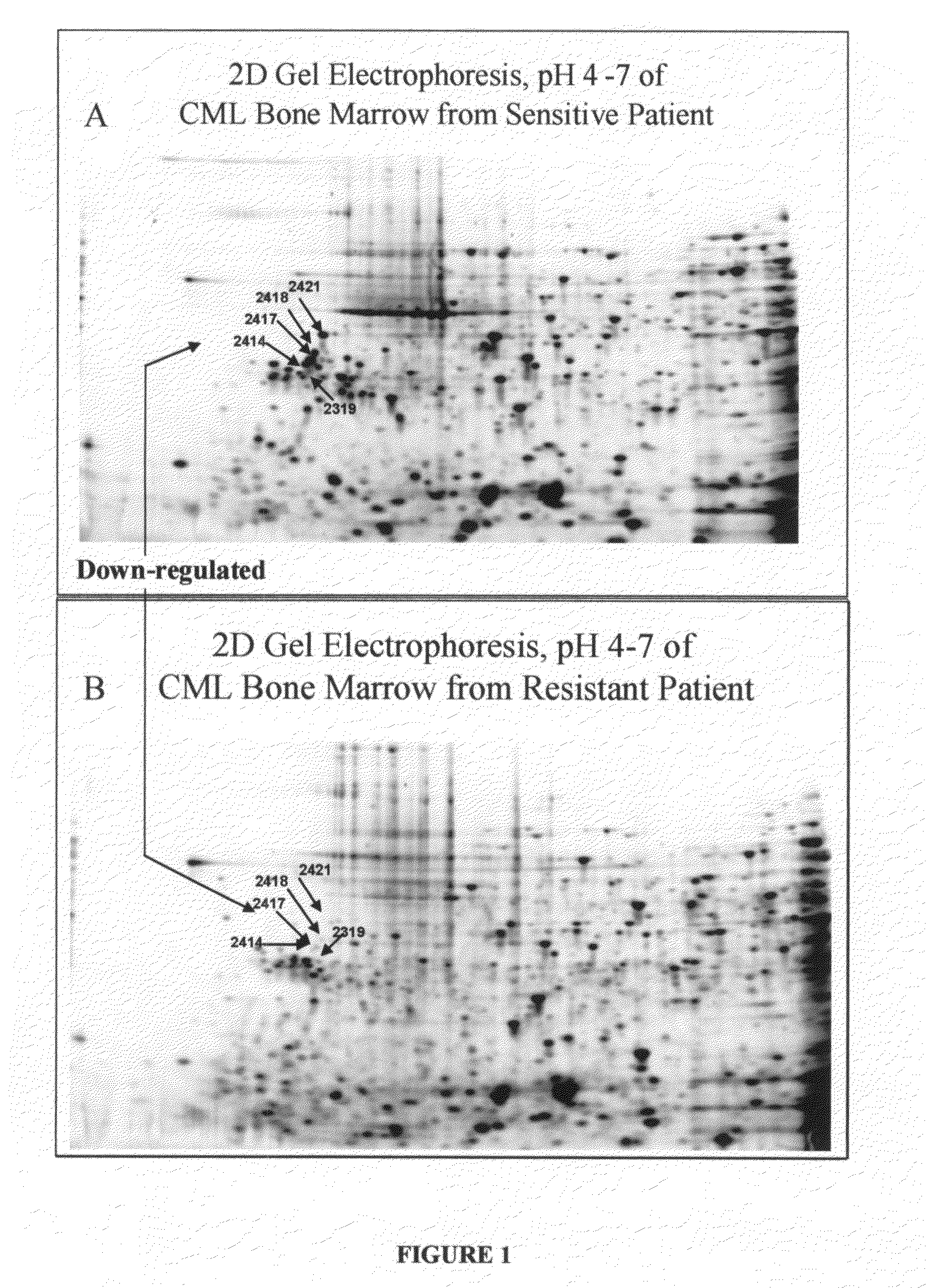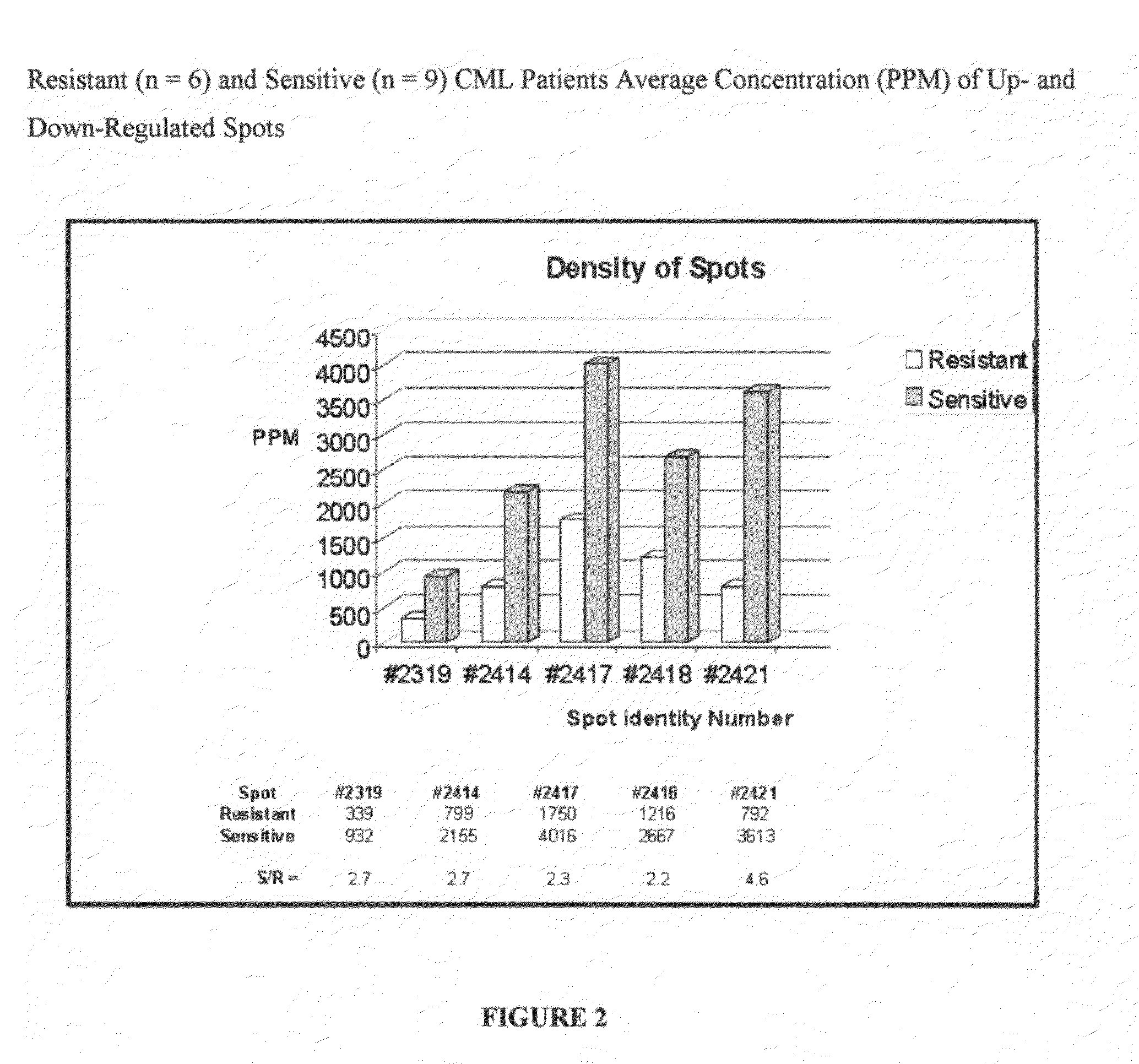Actin proteins as biomarkers for indication and targeting of resistance and sensitivity to an Abl kinase inhibitor in patients with chronic myelogenous leukemia
a technology of abl kinase inhibitor and actin protein, which is applied in the direction of depsipeptides, peptide/protein ingredients, electrolysis, etc., can solve the problems of deteriorating patient health, revealing the risk or potential risk of individuals developing a disease, and infancy of proteomic testing for diagnostic purposes, so as to increase the effectiveness of an ab1 kinase inhibitor. , the effect of increasing the risk
- Summary
- Abstract
- Description
- Claims
- Application Information
AI Technical Summary
Benefits of technology
Problems solved by technology
Method used
Image
Examples
Embodiment Construction
[0025]The present invention is a diagnostic assay for differentiating cancer patients having the capacity to respond to treatment with an Ab1 kinase inhibitor from patients potentially resistant to an Ab1 kinase inhibitor, and a drug target and method for rational design of a drug design for overcoming resistance to treatment with an Ab1 kinase inhibitor. The method is based on the use of two-dimensional (2D) gel electrophoresis to separate the complex mixture of proteins found in bone marrow aspirates from patients with chronic myelogenous leukemia, and the quantitation of a group of identified biomarkers to differentiate between chronic myelogenous leukemia patients having the capacity to respond to treatment with the Ab1 kinase inhibitor, imatinib mesylate, and chronic myelogenous leukemia patients potentially resistant to treatment with the Ab1 kinase inhibitor, imatinib mesylate.
[0026]In the context of the present invention CML consists of bone marrow aspirate biopsy diagnosed ...
PUM
| Property | Measurement | Unit |
|---|---|---|
| Volume | aaaaa | aaaaa |
| Volume | aaaaa | aaaaa |
| Volume | aaaaa | aaaaa |
Abstract
Description
Claims
Application Information
 Login to View More
Login to View More - R&D
- Intellectual Property
- Life Sciences
- Materials
- Tech Scout
- Unparalleled Data Quality
- Higher Quality Content
- 60% Fewer Hallucinations
Browse by: Latest US Patents, China's latest patents, Technical Efficacy Thesaurus, Application Domain, Technology Topic, Popular Technical Reports.
© 2025 PatSnap. All rights reserved.Legal|Privacy policy|Modern Slavery Act Transparency Statement|Sitemap|About US| Contact US: help@patsnap.com



